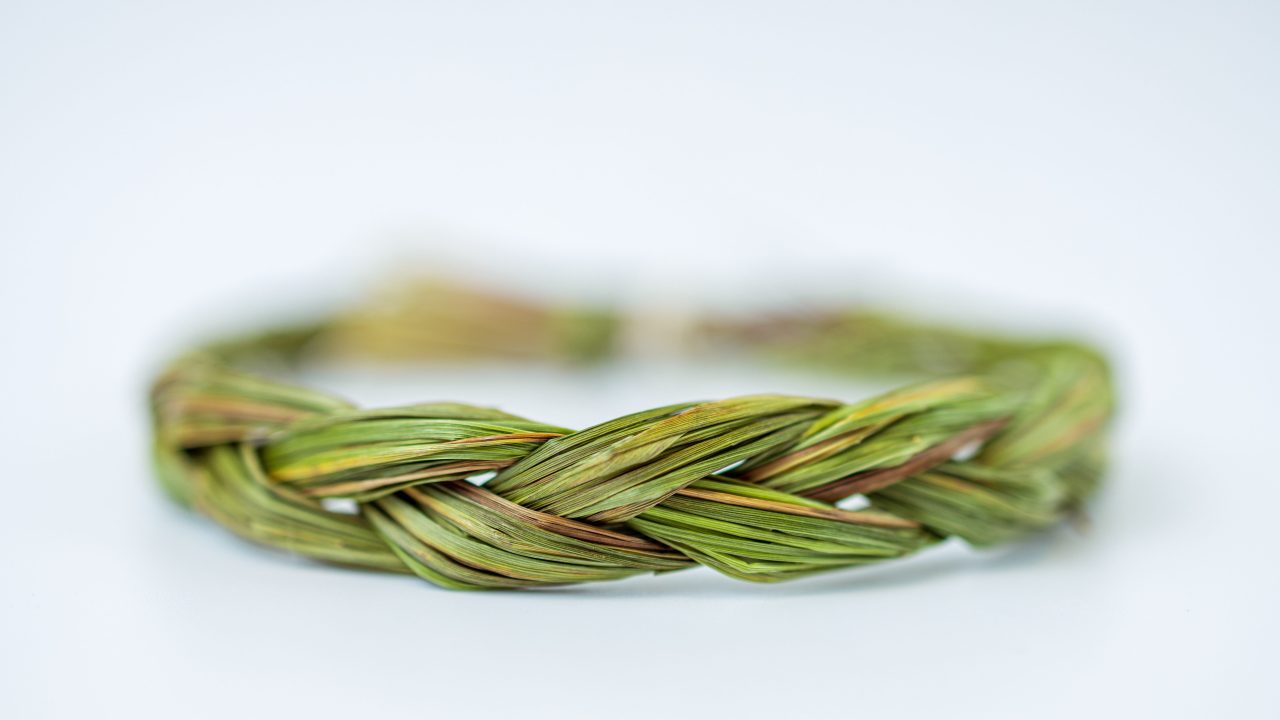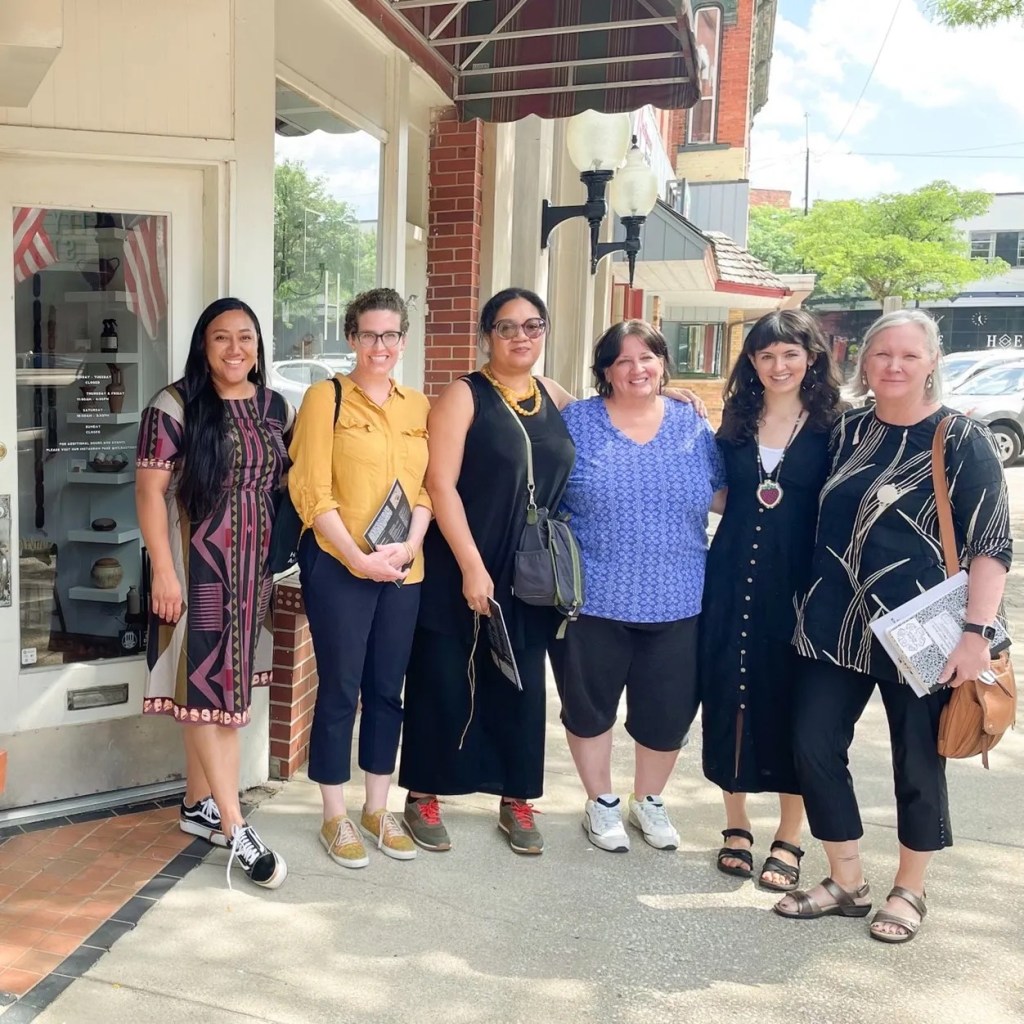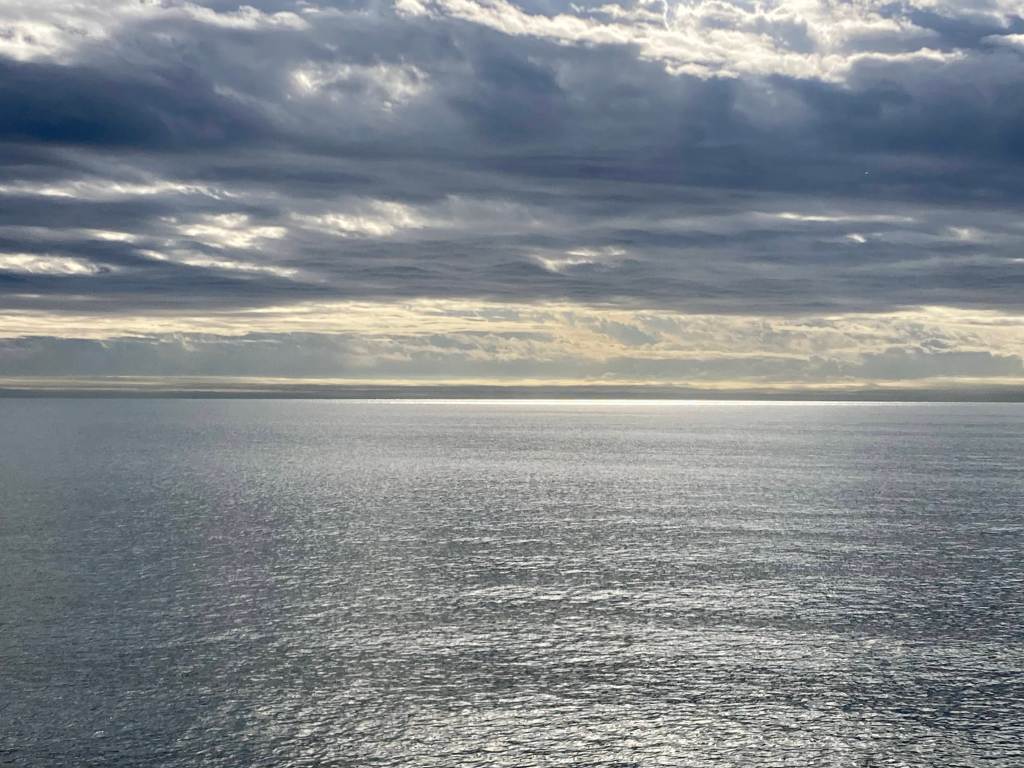
In recent years, there have been renewed calls for museums to adopt more inclusive and equitable practices, with significant changes to the ways we work and collaborate at all levels of our institutions. As a grants manager, I think about the new funding models these changes require, and how we can use grants to support the innovation they involve. I also think about how, in order to enable transformative exhibitions and programs, grantmakers and grantwriters need to transform the structures and practices of our own work.
At Northwestern University’s Block Museum of Art we have been focusing on these concerns as we develop proposals for a process-driven project that addresses the Indigenous art history of the place now known as Chicagoland. Our grantseeking efforts on behalf of Woven Being: Indigenous Art Histories of Chicagoland (working title) have inspired us to share some approaches that may be useful for other grantseekers and to advocate for shifting the expectations of grantmakers. While we developed these grantwriting ideas in alignment with The Block’s efforts to connect with Indigenous artists, communities, and museum specialists specifically, they are relevant to process-based and community-driven projects of any kind.
Because its ultimate shape will be the result of partnerships still in formation, Woven Being has posed a challenge in following the grant process as it usually works. Typically, grant writers seek to comprehensively map out projects and their intended outcomes before work begins on them, so that funders see them as worthy of their support. But to create truly community-led and process-driven projects, in response to and in relationship with others, means starting with more questions than answers. As much as this open-endedness poses a challenge to grantwriting, it is an indispensable part of acknowledging that the museum is not the only authority, does not know the full story, and needs to responsibly engage partners in order to inform an approach to a project.
If a project forged in this collaborative spirit cannot offer the definition upfront that grant reviewers expect, then what will give funders the confidence that it is still poised for success? How can grantwriters acknowledge unknowns early in the research process, while still presenting a persuasive vision for a project? As we have attempted to answer these questions ourselves, we have determined that responding to the needs of a project like this within a grant application might look like:
- Asking a series of questions rather than stating definitive project outcomes
- Acknowledging when more information is needed (or may never be known)
- Developing a collaborative leadership team with diverse forms of expertise
- Building in funds for:
- Research outside of universities, museums, or archives
- Travel to and from displaced or otherwise marginalized communities
- Unrestricted funding lines for supporting community partner programs
- Compensation for knowledge sharers
- Gifts for project contributors
These considerations point to a reimagining of project-based funding that takes into account a much wider scope of activity and broader community of knowledge sharers than is typical for the budgeting process. To enact sustainable institutional change that values the collaboration of partners at all stages of a project like this, museums and grantmakers need a frame that takes a wider view of when projects “start” and “stop.”
Below, my collaborator Lois Taylor Biggs (Cherokee Nation and White Earth Ojibwe, Terra Foundation Curatorial Research Fellow) and I share more about how our grantwriting process is evolving through the ongoing development of the Woven Being project. Lois and I highlight four interrelated considerations that have defined our work so far: process, responsiveness, time, and relationships.
1. Process over Product
Rather than approaching partners with a detailed exhibition thesis, the curatorial team leading the Woven Being project began with a research process grounded in Indigenous methodologies of collaboration, reciprocity, and sustained dialogue. With the guidance of an expanding, intergenerational community of Indigenous knowledge sharers and non-Indigenous allies, the team set out to consider the priorities and thematic interests of the regional Indigenous communities whose stories will be represented. While Woven Being’s themes and content continue to be in formation, the project will engage themes including kinship between materials; relations across regional waterways and landways; and the weaving together of past, present, and future in the Chicago region.
Working in this way, with a thesis emerging over the course of the project, requires our sponsors to trust our process and learn alongside us, rather than evaluate an already determined exhibition framework, object checklist, or list of expected outcomes. In contrast to the typical process, where museum staff use preliminary planning grants to support the creation of these things, the Woven Being team has used research funds to build community relationships as the foundation of the project. The details will develop through conversations with Indigenous artists and advisors.
2. Reframing the Guidelines
As we’ve sought funding for Woven Being, we have aimed to center our project values of reciprocity, collaboration, and dialogue in our grantwriting. In several instances, this has required conversations with our sponsors to find common ground and to request flexibility in their grant guidelines.
One of these areas of conversation has been in defining the concept of place. For instance, one of our sponsors, the Terra Foundation for American Art’s Art Design Chicago initiative, specifies a local focus, which has a nuanced meaning in our context. While our project does focus on the Indigenous art histories of Chicagoland, those histories include people who have been removed from their ancestral homelands, so we need to allocate time and money for travel to communities that now reside at a distance from Chicago, exceeding the grant program’s anticipated budget guidelines in this area. The foundation has been understanding in these discussions, as it recently adopted a new mission dedicated to expanding American art narratives, and has been working to reimagine its practices to match. “We realize the importance of considering not only the contents of projects we support, but also how they are developed,” Senior Program Director Jennifer Siegenthaler told us. As we begin to approach additional national funders, we are preparing for further conversations about place as well as sovereignty. For example, we have discussed the fact that partnerships with sovereign tribal nations may require that grantmakers reconsider concepts embedded in their guidelines of “American,” “national,” or “international” exhibition projects.
Another topic of discussion has been the practice of gift-giving. Most grants disallow gifts as a budgetary expense, but in following Indigenous methodologies, they are an essential part of building reciprocal relationships with project advisors and partners. In fact, we are seeking grants partly to reinforce and sustain generosity between The Block and these collaborators. To support this work, we have coordinated with the Terra Foundation as well as staff from Northwestern’s Center for Native American and Indigenous Research to build gift resources into our funds. Members of the Woven Being team have used Art Design Chicago Community Engagement grant funds to make gifts of wild rice, jam, sweetgrass ties, and other culturally significant items to individuals we have visited and engaged in dialogue around the project.
Another area for conversation has been staff support. Guidelines frequently cap staff funding at a certain percentage of the grant budget. The Block pushed these boundaries to bring on team members with needed expertise and to support a collaborative leadership model. Woven Being is led by a team including two curators brought on specifically for this project—Jordan Poorman Cocker ([Gáuigú (Kiowa)) and Lois Taylor Biggs (Cherokee Nation and White Earth Ojibwe)—as well as four members of the museum’s curatorial, education, community engagement, and collections staff. We have also been able to fund the participation of Indigenous knowledge sharers and non-Indigenous allies in project convenings. Assembling this team and group of advisors would not be possible without external funding to provide fair compensation.

3. It Takes Time
Building relationships, listening, and responding within a collaborative process takes time. It also requires rigorous learning and reflection regarding the stories that a museum is best suited to tell.
For this reason, the Woven Being project has required a long timeline to support deep study and consultation. In 2013, Northwestern University convened a Native American Outreach and Inclusion Task Force in response to Indigenous-led student activism surrounding university founder John Evans’s role in the 1864 Sand Creek Massacre. Beginning in 2015 and in response to the Task Force’s recommendations, The Block has made an ongoing effort to be in good relation with Indigenous artists and nations. Recognizing our project as one step in this effort, we feel a responsibility to acknowledge our institutional histories as we foster long-term relationships. Informed by Pascua Yaqui/Chicana scholar M. Duarte’s concept of positionality, we have conducted ongoing, site-specific research into The Block’s position: on the lands and lakefront of the Council of Three Fires (which consists of the Ojibwe, Potawatomi, and Odawa people) as well as the Menominee, Miami, and Ho-Chunk Nations; as part of the region now known as Chicagoland; as an entity of Northwestern University; and as an art institution. Our positionality research has encouraged us to reflect on The Block’s history and its associated responsibilities. This research will help ensure that our work on Woven Being benefits not just this one project, but is firmly tied to the arc of our commitment as it reaches into the future.
Grant support from the Art Design Chicago initiative has allowed for this long view of research and community engagement planning over multiple years, beginning with a research grant awarded in 2020. Across the landscape of our city, the Terra Foundation has also encouraged synergistic thinking by bringing recipients of research and development grants into a “learning community” intended to allow for institutional exchange and community building across a variety of types and sizes of organizations.
4. Sustaining Relationships
In some cases, flexibility in guidelines can develop over time, as grantmakers and grantees build trust across projects, years, and contexts. This has been the case with The Block and the Terra Foundation, whose staff have been with us along the way as many of our projects have developed, and now understand our way of working and our priorities. Jennifer Siegenthaler describes the values that drive the Woven Being project as aligned with the Terra’s own. “This kind of deep work with communities requires us to be flexible in our grantmaking, understanding that the needs of projects we support—plans, time frames, and budgets—shift in response to the collaborators’ needs and interest,” she said.
We are privileged to have developed this trusting relationship with the Terra Foundation, which has allowed us to be candid about the needs and approach of the the Woven Being project. It is worth noting that the partner kickoff meeting for Art Design Chicago 2024 took place in January 2020, meaning that our first one-on-one conversations with the foundation began in the earliest months of the COVID-19 pandemic. Amidst the uncertainty, the foundation responded to the urgent needs of arts organizations, including The Block, with unsolicited emergency relief grants. This trust and care for our organization, beyond the confines of any one project, was proof of the power of long-term relationships. Within the context of an ongoing relationship, conversations with funders can have a different starting point, in which grantees are emboldened to share openly the challenges and opportunities of a project like Woven Being.
At The Block, we plan to carry these approaches to grant proposals forward as part of our efforts to instill inclusive and equitable practices within our institution. We are learning from our experiences and, even now, beginning to see how our efforts in Woven Being fundraising will change our ongoing approach to grantwriting. In collaboration with our partners, including funders, we see the changes to our processes, responsiveness, timeframes, and relationships as central aspects of our collective impact.









I grew up near Northwestern University and familiar with the area of Wilmette and Evanston, having gone to the Block gallery before. This was a well written article and I am glad they shared it with us. Good advice for grant writing efforts.
I volunteered for the Terra Museum of American Art when it was in Evanston and proud to know they are involved with grants for these types of indigenous efforts. I am involved in some non profits that also are trying to reach out and help with understanding and history like the Native American Sacred Trees and Places and the group called One Nation Walking Together.